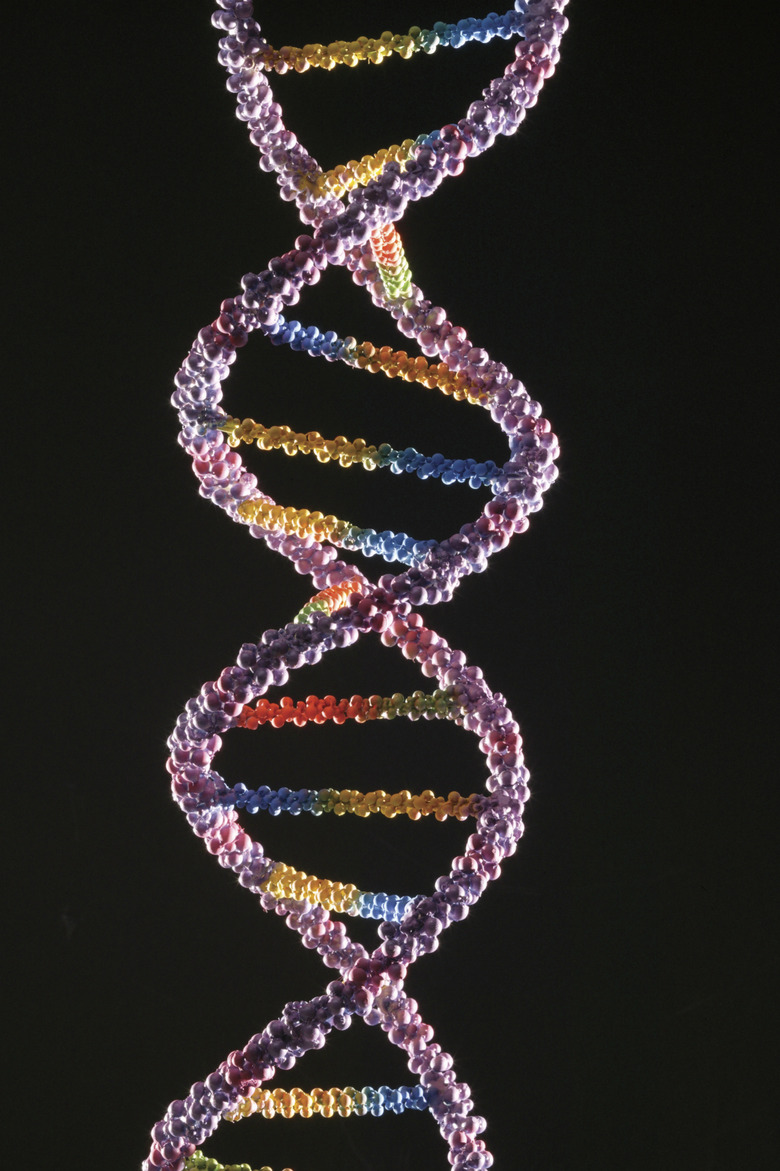Relationship Between DNA & Natural Selection
Biologists define evolution as genetic change in a population across generations. Over time, this process of genetic change can give rise to new genes, new traits and new species, all brought about through changes in the genetic code or DNA. Several mechanisms result in evolutionary changes; of these, one of the most important is natural selection.
Mutation
Cells copy their DNA when they divide; both daughter cells inherit an identical copy. Sometimes, however, the cell's DNA replication machinery makes errors, so that one or both daughter cells have an altered copy of the original code. These errors are called mutations.
Over time, mutations and sexual reproduction ensure that organisms are not all genetically identical, even when they're descended from the same ancestors. If you compare DNA from different organisms in the population, you'll usually find many differences. In other words, mutations in DNA create genetic diversity in a population.
Natural Selection
Often, some organisms are better adapted to survive and reproduce in a given environment than others. These well-adapted organisms usually leave more offspring. Because these organisms from more adaptive populations pass their DNA on to their progeny, the mutations they carry will, over time, become more common. Mutations that make an organism ill-adapted to its environment, by contrast, will tend to become less and less common over time. This process is called natural selection.
Genotypes and Phenotypes
An organism's genotype is the collection of genetic variants it possesses. Its phenotype, by contrast, is its traits — visible features of the organism like eye color, hair color, height and so on. Some traits can be affected by environmental factors. For example, if you're malnourished as a child, your height at adulthood may be shorter than what you would predict based on your genes alone. Consequently, there can be more than one phenotype for the same genotype. Natural selection acts on phenotypes, so it only acts on the genotype indirectly.
Other Factors
Over time, a given version of a gene might become so successful that all other versions of the same gene disappear from the population. When this happens the successful gene is said to have become fixed. It often happens, however, that some variants of a gene give their possessors only a slight advantage or even no advantage at all. In this case, natural selection might not eliminate the other variants entirely, and many variants of a gene can persist in the population.
References
- Molecular Cell Biology; Harvey Lodish, Arnold Berk, Chris Kaiser, Monty Krieger, Matthew P. Scott, Anthony Bretscher, Hidde Ploegh and Paul Matsudaira
- Brown University Division of Biology and Medicine: Phenotype and Genotype
Cite This Article
MLA
Brennan, John. "Relationship Between DNA & Natural Selection" sciencing.com, https://www.sciencing.com/relationship-between-dna-natural-selection-2027/. 24 April 2017.
APA
Brennan, John. (2017, April 24). Relationship Between DNA & Natural Selection. sciencing.com. Retrieved from https://www.sciencing.com/relationship-between-dna-natural-selection-2027/
Chicago
Brennan, John. Relationship Between DNA & Natural Selection last modified August 30, 2022. https://www.sciencing.com/relationship-between-dna-natural-selection-2027/
